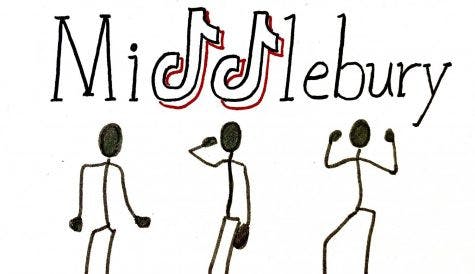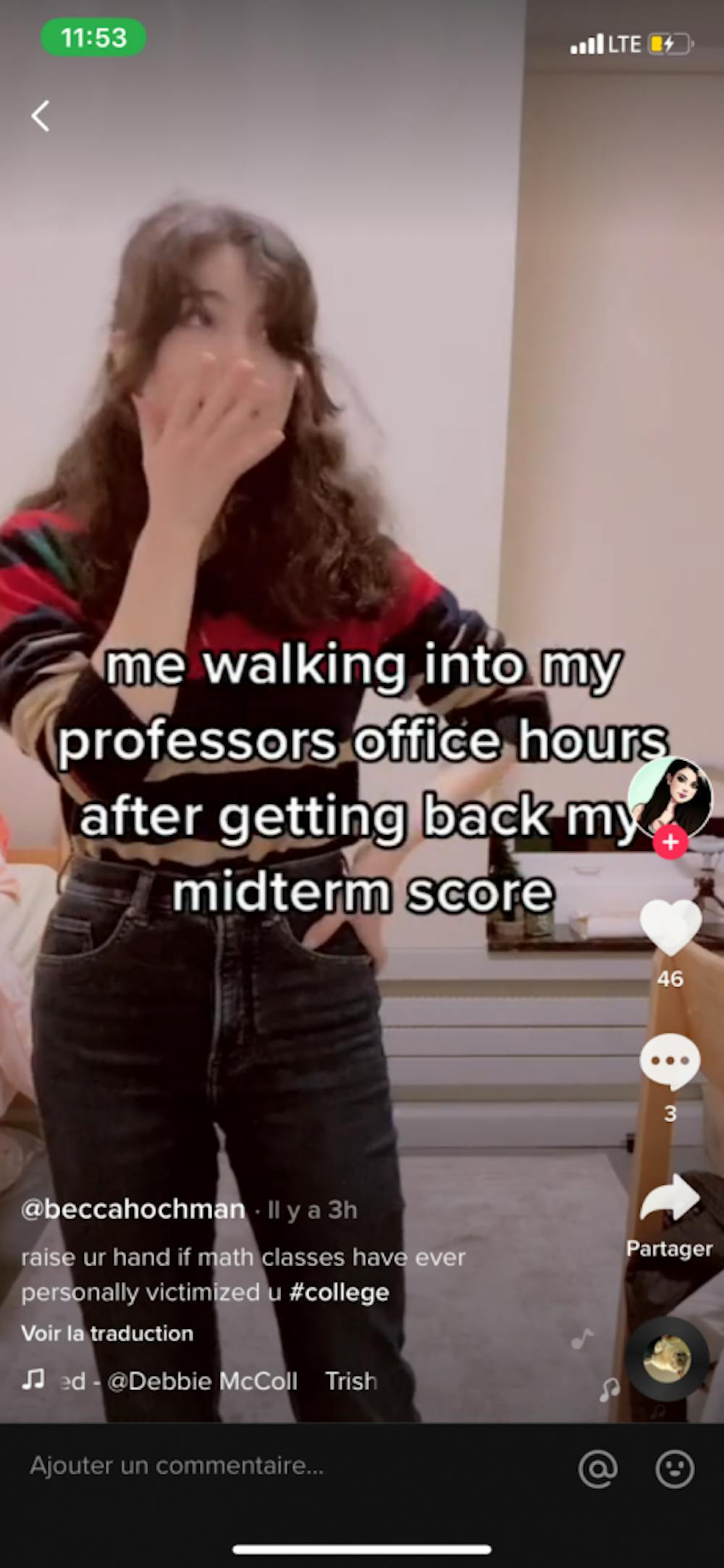TikTok has captured the zeitgeist of Gen Z, becoming both a platform for displaying their particular brand of chaotic humor and a locus for activism and advocacy. It also can’t stay out of the news — and not merely because President Trump’s executive orders threatened its very existence in the United States.
But what about the rest of TikTok users — those who haven’t accrued millions of followers? Turns out, that describes most MiddKids.
Becca Hochman-Fisher ’23, a social media veteran, has 6,000 followers on TikTok, while Liza Obel-Omia ’23 is an unabashed TikTok enthusiast who’s “nowhere near famous,” as she puts it. Leora Segal ’23 is another avid TikTok user, though she keeps her videos private.
As both creators and consumers of TikTok videos, these three users painted very different pictures of how the app is received on campus. Hochman-Fisher deemed filming on campus difficult. “I don’t really shoot in public places usually, and most of the time, if I do, I do it super covertly,” she told The Campus. “I don’t think this is a TikTok campus.”
Obel-Omia sees it differently. “This is a pretty big TikTok campus,” she said in an interview with The Campus. “I’m not really shy about making them in front of people. It’s also fun because other people from school see that I'm on campus, and it’s like, ‘Oh, we have a shared connection.’”
Segal offered one explanation for these disparate views, pointing to how TikTok culture is constantly shifting. “When I first started using TikTok, it was viewed as taboo, but the stigma has changed a lot since so many people were using it during quarantine,” she said.
It’s this diversity of styles and opinions that Obel-Omia loves most about the app. “I really like that everyone can use it,” she said. According to Obel-Omia, while Tik-Tok’s ancestor Vine “was just one medium for funny people,” TikTok allows for a range of creative expression through fashion, music and visual art.
All three TikTokers agree that the experience of each user is insulated and personal. “What surprised me — and this was intentional on the part of ByteDance — was how well-fit the content was,” Hochman-Fisher said, referencing TikTok’s parent company, and the infamous ‘For-You Page’ algorithm, which curates content for users. Obel-Omia agreed. “One of my favorite things about it is that everything I see on there is related to me or makes me think about things that happen in my own life,” she said.

Segal saw the TikTok algorithm as a way of exploring individuality among friends, as she and her friends compared personal interests and algorithms, noticing the differences among the content they saw and enjoyed.
For Middlebury students and TikTok users everywhere, the app offers a collective experience that remains deeply personalized.
Still, there are some TikTokers that make it onto everybody’s phone. Hochman-Fisher attributes the mainstream fame achieved by today’s TikTok stars as merely another step in the normalization of internet celebrity, arguing that there has been a steady trend of YouTubers and overall internet personalities breaking into mainstream media.
However, Obel-Omia ascribed fame on the platform to something different altogether. “You have to look a certain way to blow up on TikTok,” she said. “A lot of it is humor, but I do think it's superficial people who are getting fame.”
For the college’s quiet TikTok users, maybe fame isn’t the real goal. As Segal said, “I really do think TikTok has brought the world together in a way that other social media platforms have not.”
Did you spend your quarantine getting into TikTok? You’re not alone.

Comments



